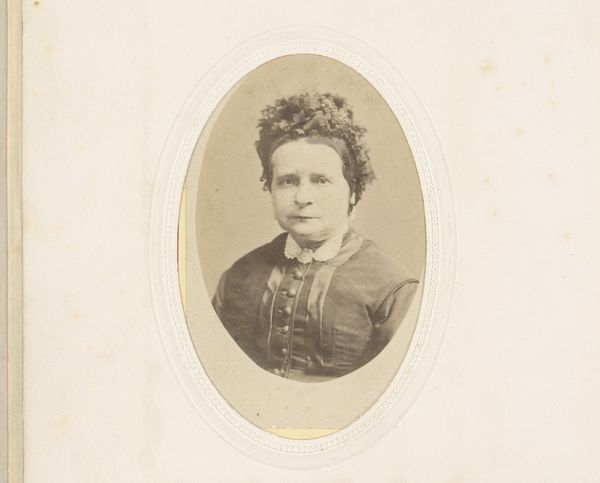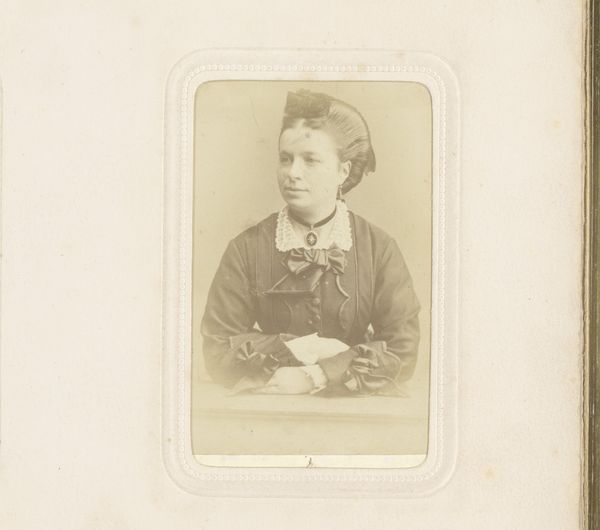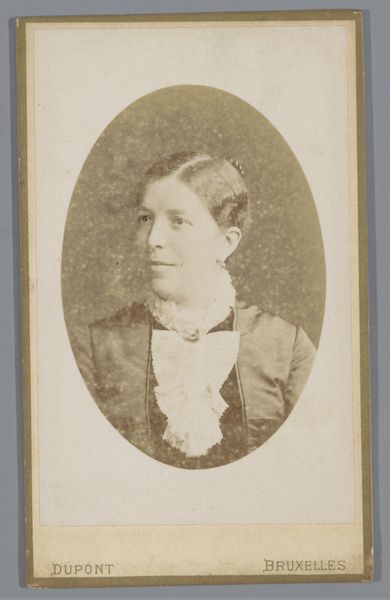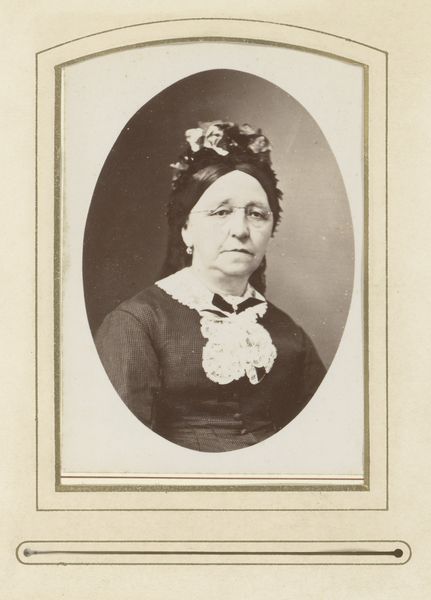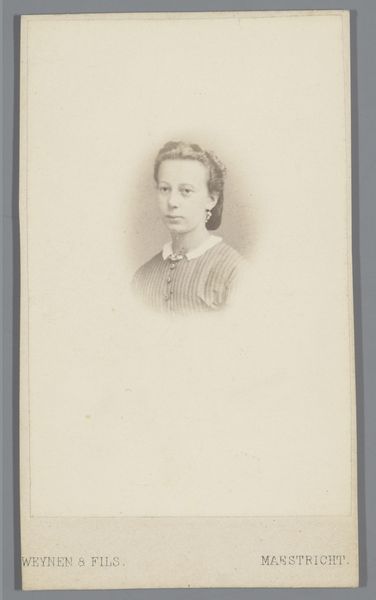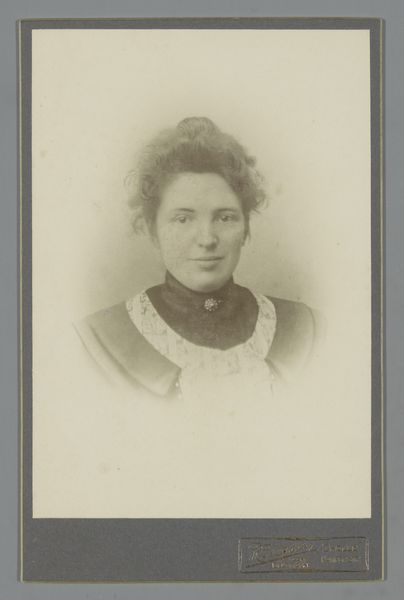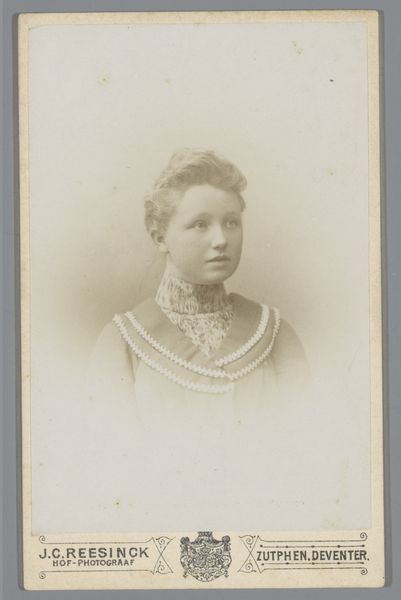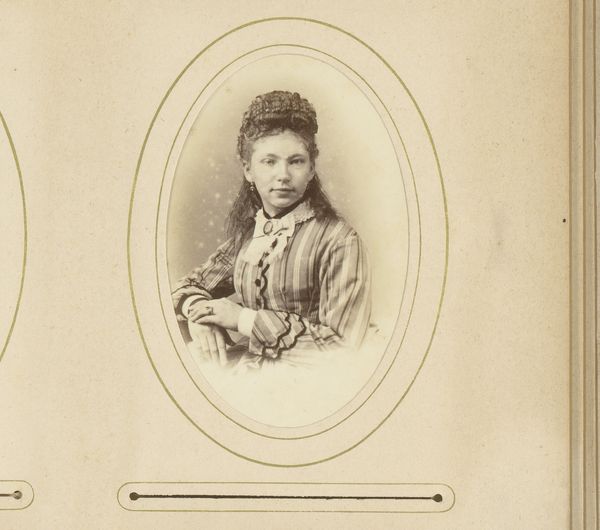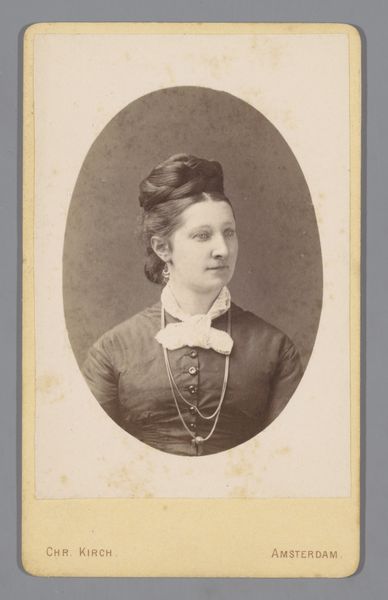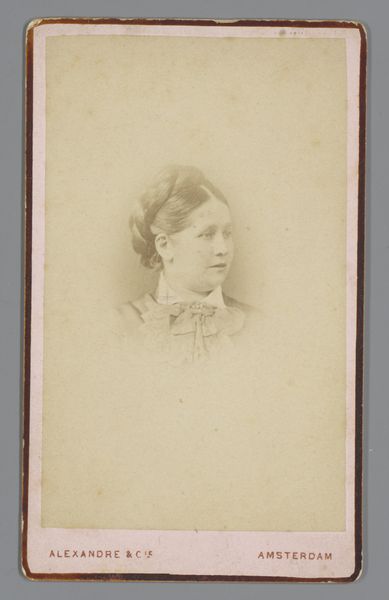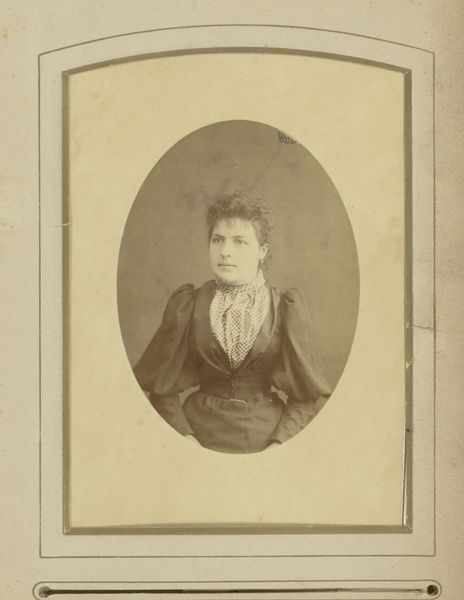
photography, albumen-print
#
portrait
#
photography
#
coloured pencil
#
genre-painting
#
albumen-print
Dimensions: height 105 mm, width 64 mm
Copyright: Rijks Museum: Open Domain
Editor: This albumen print, "Portret van een onbekende vrouw" from Witz et Cie., dates somewhere between 1855 and 1885. The subject's gaze is really arresting. What strikes me, though, is the seeming contradiction between the formal presentation of the sitter and our utter lack of information about her identity. What do you make of it? Curator: That contrast between presence and anonymity is really key. Studio portraiture in this period offered a rapidly expanding middle class a way to participate in visual culture. The photograph itself became a social object, a form of self-representation, but one dictated by prevailing tastes and often standardized poses. To be able to afford such luxury was a privilege, signaling status. Editor: So, while we don’t know her name, the very existence of the photo speaks volumes? Curator: Precisely. And consider the studio itself, Witz et Cie. These were businesses that shaped photographic trends, mediating how people saw themselves. The client pays them to project an image back out to society, with that image being subject to socioeconomic circumstances of the day. A photograph could promote their trade and reinforce ideas of beauty and decorum. To what extent does the sitter's actual identity become irrelevant? Editor: That’s fascinating! It makes you think about the power dynamics involved, and how the image served more than just a personal purpose. The framing even turns the photo into an almost commercial good... Curator: Exactly. The circulation and consumption of these images solidified social hierarchies, which has repercussions in many aspects of contemporary society. The seemingly innocuous portrait thus offers a window into the era's societal structures. Editor: Wow, I never would have thought about it that way. I really appreciate how you’ve shown how social forces influenced something as seemingly personal as a portrait!
Comments
No comments
Be the first to comment and join the conversation on the ultimate creative platform.

